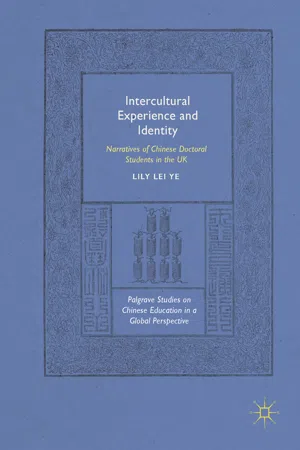Internationalisation of Higher Education
Higher education in the era of globalisation has become more international and internationalisation continues to be an important issue on the agenda of higher education (e.g. Egron-Polak and Hudson 2014; Maringe and Foskett 2010; Spencer-Oatey and Dauber 2017). A great deal of literature focusing on globalisation and internationalisation of higher education has emerged over the years (e.g. de Wit et al. 2015; Deardorff 2012; Egron-Polak and Hudson 2014; Killick 2013, 2015; Knight 2015; Leask 2015; Marginson and Sawir 2005; Maringe and Foskett 2010; Taylor 2010). There are several dynamically linked themes of internationalisation of higher education in the current literature, which include student and staff mobility, recognition across borders of study achievements, transfer of knowledge across borders, intercultural competence , internationalisation at home, similarity or heterogeneity of national systems of higher education, national and institutional policies on the international dimension of higher education or internationalisation strategies, funding internationalisation and quality review of internationality (Kehm and Teichler 2007; Teichler 2009, 2010, 2017).
The terms globalisation and internationalisation are sometimes interchangeable, but they are different concepts. Globalisation is “the catalyst” while internationalisation is the response in a proactive way (e.g. Knight 1999). In other words, internationalisation can be understood as the strategic response of higher education institutions to the driving forces of globalisation , which includes a variety of policies and programmes covering three primary functions of Higher Education Institution, namely, teaching, research and service to society (Altbach et al. 2009; Marginson and Sawir 2005).
Globalisation is “the economic, political, and societal forces pushing 21st century higher education toward greater international involvement” (Altbach and Knight 2007: 290), which is “the intensification of worldwide social relations which link distant localities in such a way that local happenings are shaped by events occurring many miles away and vice versa” (Giddens 1990: 64). On the other hand, internationalisation is the process of integrating an international, intercultural or global dimension into teaching, research and service functions of higher education (Knight 2015; Maringe and Foskett 2010), which “is a commitment, confirmed through action, to infuse international and comparative perspectives through the teaching, research and service missions of higher education” (Hudzik 2011: 6). de Wit (2002) identifies four different institutional approaches of internationalisation : activity, rationale, competency and process. The activity approach defines internationalisation in terms of categories or types of activity, such as student and scholar exchanges. The rationale approach explains internationalisation in terms of its purposes or intended outcomes. The competency approach focuses on students and staff’s knowledge and skills development. The process approach regards internationalisation as a dynamic and evolving process of integrating an international dimension into the major functions of the institution.
The internationalisation of higher education is a changing and evolving process of integration, continuously influenced by globalisation , and shaped by the international context in which it occurs (Knight 2004; Smeby and Trondal 2005). The process of internationalisation of higher education consists of two key components: abroad and at home (e.g. de Wit et al. 2015). International abroad refers to any border crossing activities such as study abroad , education abroad, students and staff mobility; international at home concerns curriculum development and activities that nurture international and intercultural understanding and competences (Knight 2008). The concept of Internationalisation at Home (IaH) can be veiwed as “any internationally related activity with the exception of outbound student mobility” (Nilsson 2003: 31), focusing on both international learning and intercultural competence (Wachter 2003).
Higher education institutions adopt various internationalisation strategies to cope with the changing cultural, economic, educational, political and social environment caused by globalisation (Rienties and Nolan 2014; Spencer-Oatey and Dauber 2017). These approaches include: student and staff mobility (Bhandari and Chow 2008; Maddux and Galinsky 2009; OECD 2012; see also Cantu 2013); internationalising the faculty (Childress 2009; Green and Olson 2003); international students’ recruitment (Cantu 2013; Knight 2004); internationalisation of curricula and quality assurance (OECD 2012); internationalisation through dual and joint programmes; and launching offshore campus (OECD 2012).
Internationalisation of higher education can generate both benefits and risks for higher education institutions in terms of administration, curriculum, pedagogy and learning outcomes (e.g. Stone 2006; Kerklaan et al. 2008; Knight 2010). International students and staff mobility, together with improved quality of education, are identified among the most important benefits (Knight 2007). More recently, Jibeen and Khan (2015) identify that the bene...
